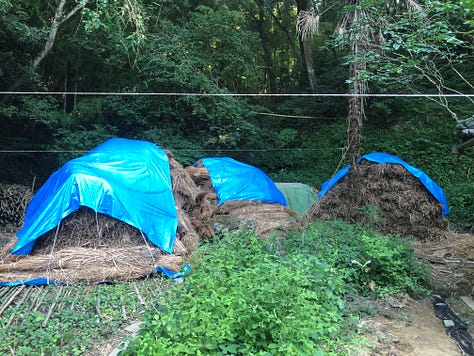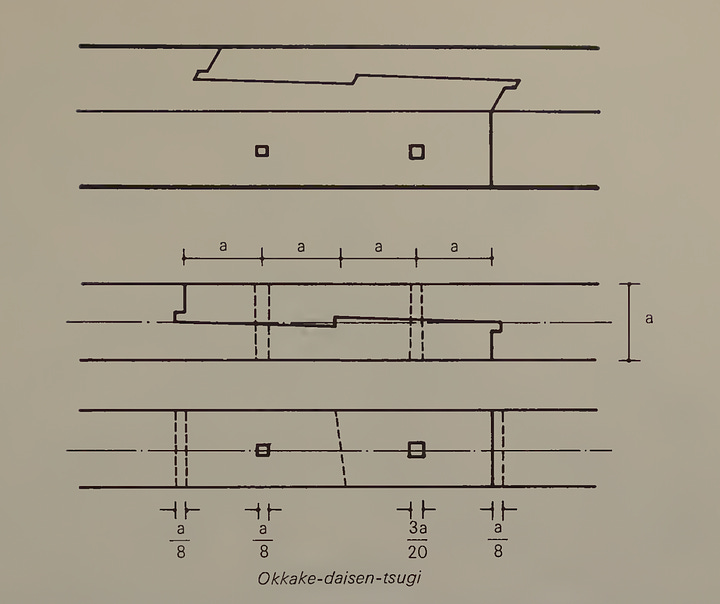As opposed to removal work like throwing out trash, cutting bamboo, and organizing storage, my brother and I have finally completed our first tangible contribution to the property: a French drain. Below, I’ve listed the Japanese “netron” pipe product we used for the drain, which is quite unique from the typical perforated pipe you’d find in the United States. Unfortunately, I haven’t found a supplier of netron pipes for you in the US.
The other major task that we completed this month was the removal of an estimated 400 small bales of straw from the attic. With one bale averaging 10 pounds, we removed roughly 2 tons of straw! Bale by bale, we piled them up in the backyard. We wore long sleeves to keep our skin relatively clean, plus we wore heavy-duty respirators. The back-breaking work in the humid attic forced me to enter a mental state of detachment, repeating in my head, “Just one at a time. Just one at a time.” I’m glad it’s over.



As someone with a soft spot for traditional architecture, I’ve been flirting with the idea of re-thatching the old roof. I hesitated to expose the straw to the elements in the backyard because that amount of straw would be enough to thatch most, if not all, of the roof. However, the current priority for me is to reduce the weight of the building in preparation for the foundation retrofit. As a consolation, I have contacted kusa-kanmuri, an incredible thatch roof company in Kobe, to try to donate the straw. I hope it can go to good use.
Having spent over a week in the attic, I have become more familiar with the construction of traditional Japanese roof framing. This makes today’s book all the more timely. The Art Of Japanese Joinery by Kiyoshi Seike has helped me to examine the various wooden joints around the house with a more trained eye.
While it is not a strict how-to manual, the book’s photographs and diagrams helped move me from a pure novice of Japanese joinery to an educated amateur. While I can rely on my brother (a trained carpenter) for detailed woodwork, I will certainly reference Seike’s book for guidance when we start restoring the wood framing.
Kiyoshi Seike was one of the most influential architects of Japan’s post-war era. His long list of architectural works includes residential homes, university buildings, and structures for the 1964 Tokyo Olympic Games. The house he built for himself in Toyko, simply titled “My House” (watashi no ie), is a Registered Tangible Cultural Property of Japan. In fact, you can schedule a visit using this Japanese website if you are interested.
In today’s episode, we take a deep dive into the history of Japanese joinery from Seike’s point of view. We learn about the origins of kiwari, Japan’s human-centered measuring and proportioning system. We learn about how to best implement joinery (namely that you ought to reinforce wooden joints with adhesives, nails, or metal braces). We also get a taste of Seike’s comprehensive and technical list of types of tsugite joints and shiguchi joints. Please enjoy.


Books Mentioned In This Episode:
When you purchase a book (or anything on Amazon) with the links below, you support me and the podcast at no extra cost to you:








Share this post